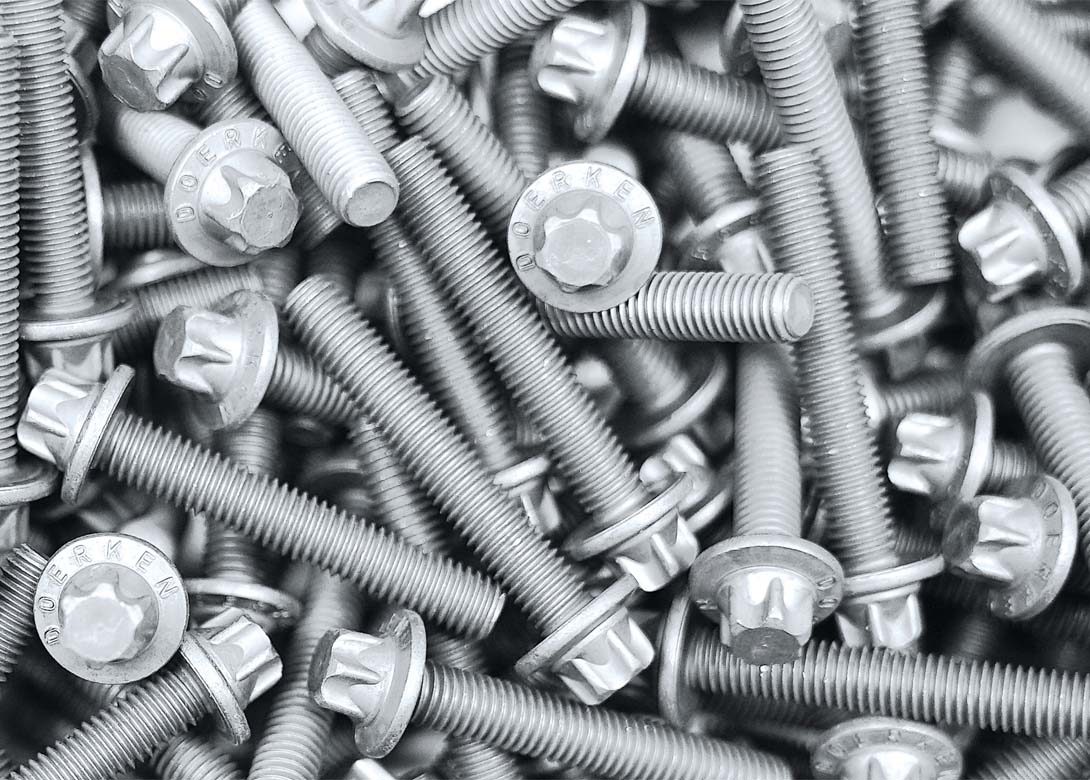
By Emre Kocak, product engineer, Dörken Coatings
In the world of zinc flake systems, it’s all about combination. Here, two different layers work together to ensure that steel components are reliably protected against corrosion and that the coating is equipped with additional properties. These two layers are a basecoat and a topcoat.
In automotive engineering, the construction industry, renewable energies, and many other industries, zinc flake coatings have been protecting components in a wide range of dimensions for decades. Despite a low coating thickness, usually only between 8µm and 20µm, it offers a high level of cathodic corrosion protection.
The features of the different layers
Basecoat and topcoat fulfil different functions in a coating system. The basecoat, which is applied directly to a component, determines the corrosion protection properties. It contains the zinc, which sacrifices itself in favour of the underlying steel if the surface is damaged. The topcoat is applied on the zinc flake basecoat and supports it. It increases the corrosion protection, by keeping corrosive media, such as water, salts or chemicals, away from the surface. However, customer requirements go beyond just corrosion protection. Therefore, a topcoat also provides functional properties of the system. Depending on the component and the demands, a topcoat can provide a coating with different, individually varying characteristics. It can be used, for example, to achieve resistance to mechanical or chemical stresses or abrasion. The colouring is also realised through the topcoat. When coating components with metric threads, a defined coefficient of friction can be set as well.
With DELTA-PROTEKT® TC 502 GZ, Dörken has developed a product that focuses particularly on this property.
What the new topcoat can do
DELTA-PROTEKT® TC 502 GZ has been specifically developed for the coating of bolts and nuts. The coating generally depends on the geometry of the component, but the spray process and dip-spin process are recommended. With the topcoat, a particularly narrow friction coefficient window can be set – even with multiple tightenings. Overall, it achieves a
high-level of process stability.
Not only were heavy metals such as chromium, lead or cadmium avoided in the formulation – the product is even completely free of per- and polyfluoroalkyl substances (PFAS). The overall package of Dörken’s latest innovation is topped off with an appealing silver finish and increased corrosion protection.
With this new topcoat, Dörken has addressed the requirements from the market. DELTA-PROTEKT® TC 502 GZ meets a wide range of friction coefficient windows required in the specifications from various OEMs.
www.doerken.com/global/en/home

Will joined Fastener + Fixing Magazine in 2007 and over the last 15 years has experienced every facet of the fastener sector - interviewing key figures within the industry and visiting leading companies and exhibitions around the globe.
Will manages the content strategy across all platforms and is the guardian for the high editorial standards that the Magazine is renowned.
Don't have an account? Sign Up
Signing up to Fastener + Fixing Magazine enables you to manage your account details.